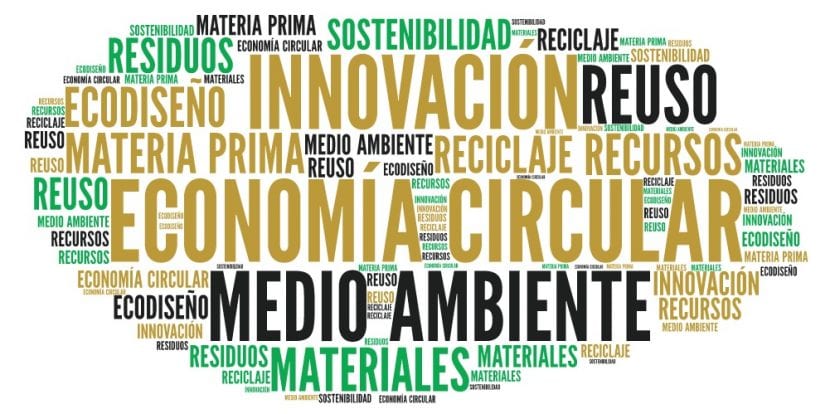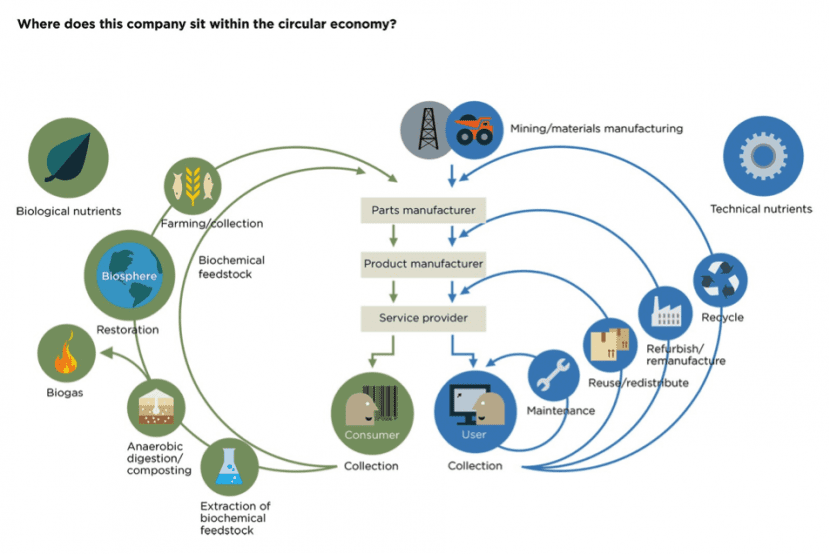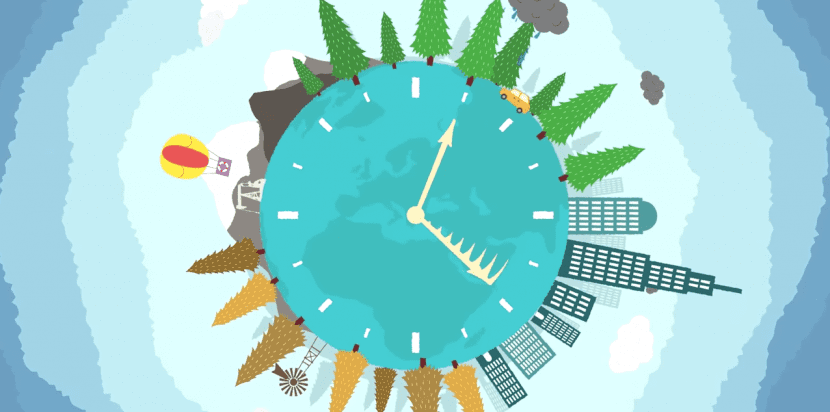
The circular economy is a term that refers to an economic model in which the aim is to be able to reduce the exploitation of materials, or in other words it is the way in which it is expected that the entry of materials to the circle called as can be reduced consumerism. In this way, the model raises the possibility of being able to close both economic and ecological flows. But this economic-ecological model has several fundamental aspects, which are taken as the main arguments of its viability. Let's see more of this circular economy, a trend at a global level.
The basis for this economic model it is based on the primordial aspect of nature, cycles. And it is that when we think about it, nature does not receive resources from somewhere else; since resources such as water, nitrogen, among many others are reused, it has a certain cycle that allows the earth to be self-sustaining, and that the parts that compose it can return to where they began.
By observing this behavior of nature, and comparing it with the consumerist system in which we live, you can see the great difference between our linear methodology in which everything has a beginning, with the exploitation of natural resources, to go through the industry that transforms them into some object to satisfy human needs, and to end up in the "garbage". And although it is true that there are many materials that are tried to be recycled in order to decrease the amount of garbage that is released into the environment, the truth is that our footprint is considerably high.
However Our methods may shut down this production line? The truth is that nature has given us the greatest lesson, and it is our decision as humans whether we learn it or not. On this occasion, it is industrial ecology that I have been in charge of relating natural cycles to human industry; Let's start by analyzing the point of view of this discipline.
Industrial ecology

The primordial basis of the industrial ecology It is in the fact that in human consumption we can find two types of components, those that are biological nutrients, these are specially designed so that they are immediately reintroduced to the biosphere, that is, in a prompt way said element, in such a way that the environment can absorb it quickly and easily. On the other hand, we find products that are designed to be reintroduced in the consumer chain, maintaining a high quality in the components and their operation, but clarifying that the latter are not designed to be able to return to the environment.
Once we know in what two kinds of human products We can divide our creations, we can go on to the objective of industrial ecology, which can be defined as the reduction of the consumption of raw materials, or what is the same as the exploitation of natural resources, and energy, in such a way that the nature itself is able to re-process and create such elements. Here we clarify that the objective of this methodology is not to make 0 the consumption of natural resources, since that would be something impossible, but it does raise the possibility of ending supply crises.
Let's see what are the fundamental tools of the industrial ecology. Starting with the reduction of the intensity of raw materials; At this point we can see that the objective is that the exploitation of nature goes down, but by reducing the need for this by making more durable products.
The second tool is the reduction in intensity of energy use; This implies that objects are more and more economical and that alternative energy sources are better used, so that we do not have to “force” nature to provide us with energy by burning fuels; but rather that the same sunlight or the energy of the air or water, are capable of satisfying our needs.
As a third tool we find the reduction of damage to both human health and nature. This tool is based on the special chemicals that are handled, as well as the industrial processes that exist, are designed with the premise of maintaining the health of humans and nature.
As a fourth tool we have the reuse, as well as the recycling of materials that humans need. This is one of those that has been put into practice the most, however, the objective of industrial ecology is to bring this recycling to a level similar to that of the water cycle, in which practically all the material is reinserted into the cycle.
The fifth industrial ecology tool it is to promote a good quality of life; This is based on satisfying the needs of people, while keeping the environment in which they live clean. This is one of the most difficult parts to achieve since we are used to living in a completely urban environment where natural parts are practically non-existent. Here a balance is sought both with the part of the modern quality of life with the natural quality of life.

The sixth and last tool is the increase in the intensity of services, this in order to reduce the costs derived from, for example, making solar installations in order to supply electricity to a region. Since according to the law of supply and demand, the greater the amount of ecological services that are offered, the lower the final price to the consumer, thereby increasing the use of resources, as well as satisfying the people's needs.
To conclude with this introduction of industrial ecology, which is the basis of the circular economy, we will mention 2 of the conditions of success that are required for the system to function optimally. Let's start with diversity; as we know the needs of people are too many, and sometimes they try to satisfy all in a deficient way, that is why, imitating nature, the economy must provide us with various alternatives; Taking an example, satisfying hunger is a need of all humans, but nature gives us a great diversity, fruits, vegetables, of all colors, sizes and flavors, to satisfy a need in different ways.
The second premise for the success of industrial ecology is proximity; In other words, from where the materials are obtained, the route to reach the end user is not too long, in order to reduce time and reduce the expenditure of energy and resources for transport.
Scope of the circular economy

So far we are talking about only one aspect of the circular economy, which is the production of goods and services based on the methodology of industrial ecology, however, the scope of this system goes much further. As the name itself says, the circular economy also encompasses the economic or financial aspect. The main reason why this is affected is that the most expensive part for the creation of a product is the exploitation of the raw material, but if we manage to make all the resources we consume reusable, we will reduce the amount of exploited material, and therefore the cost of the products would decrease dramatically, causing the money not to be concentrated only in the part of the process corresponding to the exploitation, but to flow in a uniform way in all the parts of the society.
The future of the circular economy
So far everything seems ideal, doesn't it? After all, nature once again gives us the example of how a cycle is the best way to avoid a lack of supply of some material or of some service; however, the road ahead is long.
In some countries such as Germany or Japan, the implementation of the circular economy begins with recycling, reusing and reducing consumption; if we pay attention, this tool is just one of the 6 on which the circular economy is based. However, this does not mean that it is not viable, and above all necessary, since in China the plan has been approved so that the circular economy is put to the test for 5 years as a model that can be viable for the development of that country. .
Although it is possibly the best of the alternatives that we have to be able to recover the ecological health of the planet; We still have a lot to learn and change to make the circular economy a viable model. Starting with the culture of humanity, which we will have to strive to modify in order to make issues such as recycling or reusing products a habit. A series of government reforms will also have to be made in order to ensure legitimate compliance with the rules. But we will certainly make it